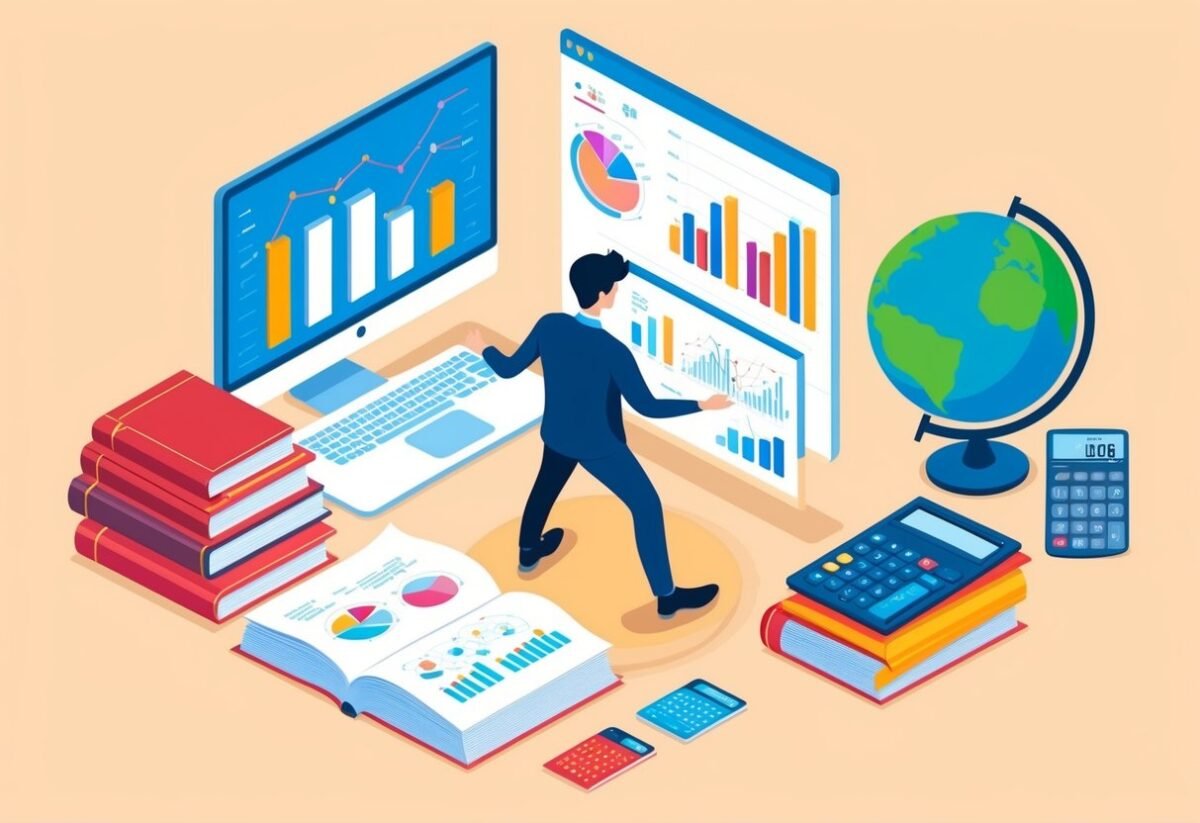Understanding the Basics of Data Science
Data science blends various disciplines to analyze large datasets. At its core, it involves working with both structured and unstructured data to extract valuable insights and make informed decisions.
Data Science and Its Interdisciplinary Nature
Data science is an interdisciplinary field that encompasses areas like computer science, mathematics, and statistics.
By combining these disciplines, data science utilizes computational power to handle and analyze large datasets.
Data scientists use machine learning algorithms and statistical models to interpret data. They also rely on data visualization tools to present results clearly.
The role of a data scientist requires both technical skills and domain expertise. Collaboration with professionals from different fields enhances the understanding and application of techniques in real-world scenarios.
By integrating diverse domains, data science enables tackling complex problems efficiently.
Core Concepts in Data Science: Structured and Unstructured Data
Structured data refers to information organized in a clear, predefined format, like spreadsheets or databases. This data is easy to manage and analyze using common tools and programming languages. It includes numbers, dates, and strings neatly arranged.
On the other hand, unstructured data lacks a specific format. Examples include text documents, emails, images, and videos. It requires advanced techniques for processing and analysis.
Handling unstructured data is complex due to its varied formats. Data scientists employ natural language processing and image recognition to analyze it.
Incorporating both structured and unstructured data is vital for comprehensive analyses, offering a broader view to inform strategic decisions.
Essential Skills for Aspiring Data Scientists
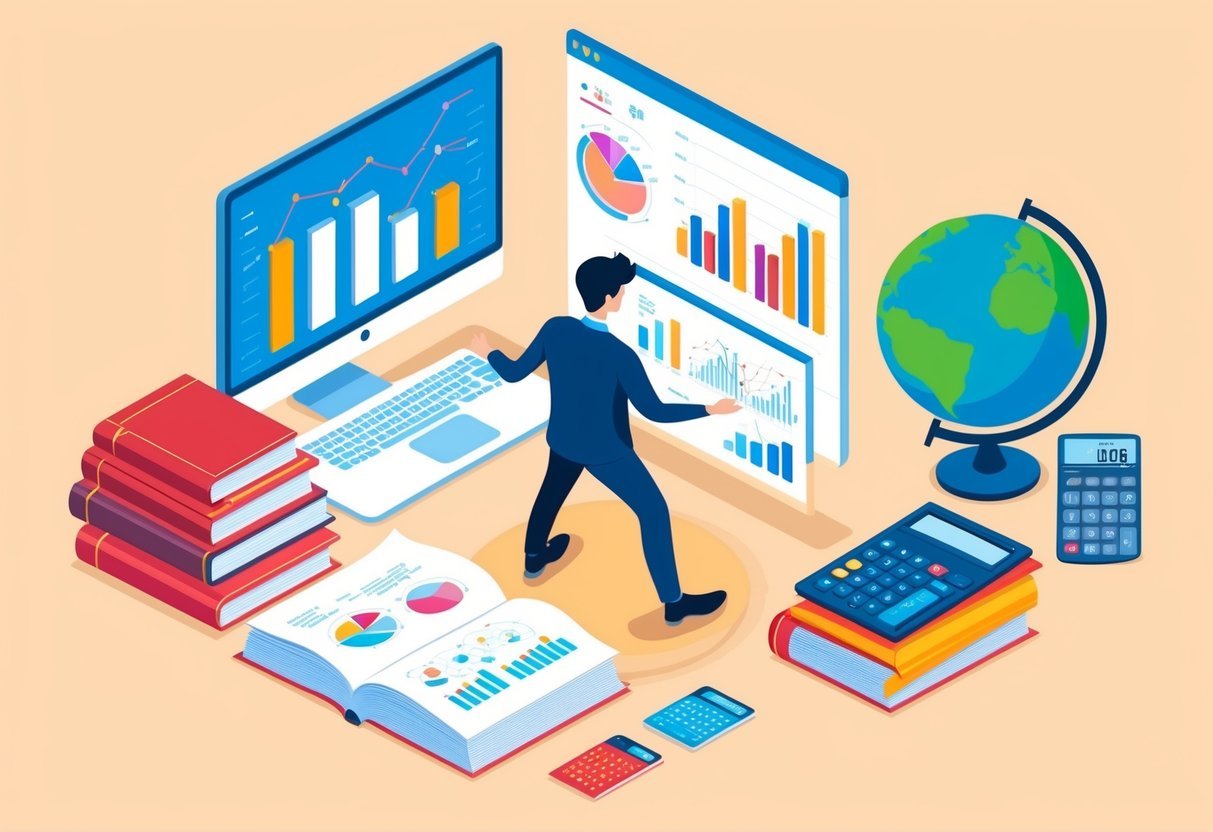
Aspiring data scientists need a blend of skills to succeed. Key areas are statistical expertise, proficiency in programming languages like Python and SQL, and effective data wrangling techniques. These skills form the backbone of data analysis and problem-solving in data science.
Statistical Expertise and Mathematical Foundation
A strong statistical and mathematical foundation is crucial for data scientists. This includes knowledge of probability distributions, hypothesis testing, and regression analysis.
These concepts help in making data-driven decisions and predictive models.
Statistics helps translate raw data into actionable insights. Understanding mathematics is also essential, especially for complex machine learning algorithms. Mastery of these topics enables data scientists to interpret and analyze data effectively, ensuring they can approach problems with structured methodologies.
Programming Proficiency: Python and SQL
Programming is vital for data manipulation and analysis. Python is popular among data scientists due to its simplicity and a rich ecosystem of libraries like NumPy, pandas, and Scikit-learn. These tools assist in managing data, performing statistical analysis, and building machine learning models.
SQL skills are equally important. SQL is used to extract and manage data stored in relational databases.
Proficiency in these languages enables data scientists to efficiently gather and process data from different sources, ensuring they can work with large datasets effectively.
Data Wrangling and Preparation Techniques
Data wrangling involves cleaning and transforming raw data into a usable format. This includes handling missing values, filtering out noise, and ensuring the data is accurate and consistent. Data preparation is often a time-consuming task but is essential for accurate analysis.
Data cleaning ensures that the datasets are free from errors and ready for analysis. Techniques such as normalization and data integration help in refining the datasets. Mastery of these processes allows data scientists to develop reliable and valid models, ultimately leading to better business decisions.
Diving into Data Analysis and Visualization
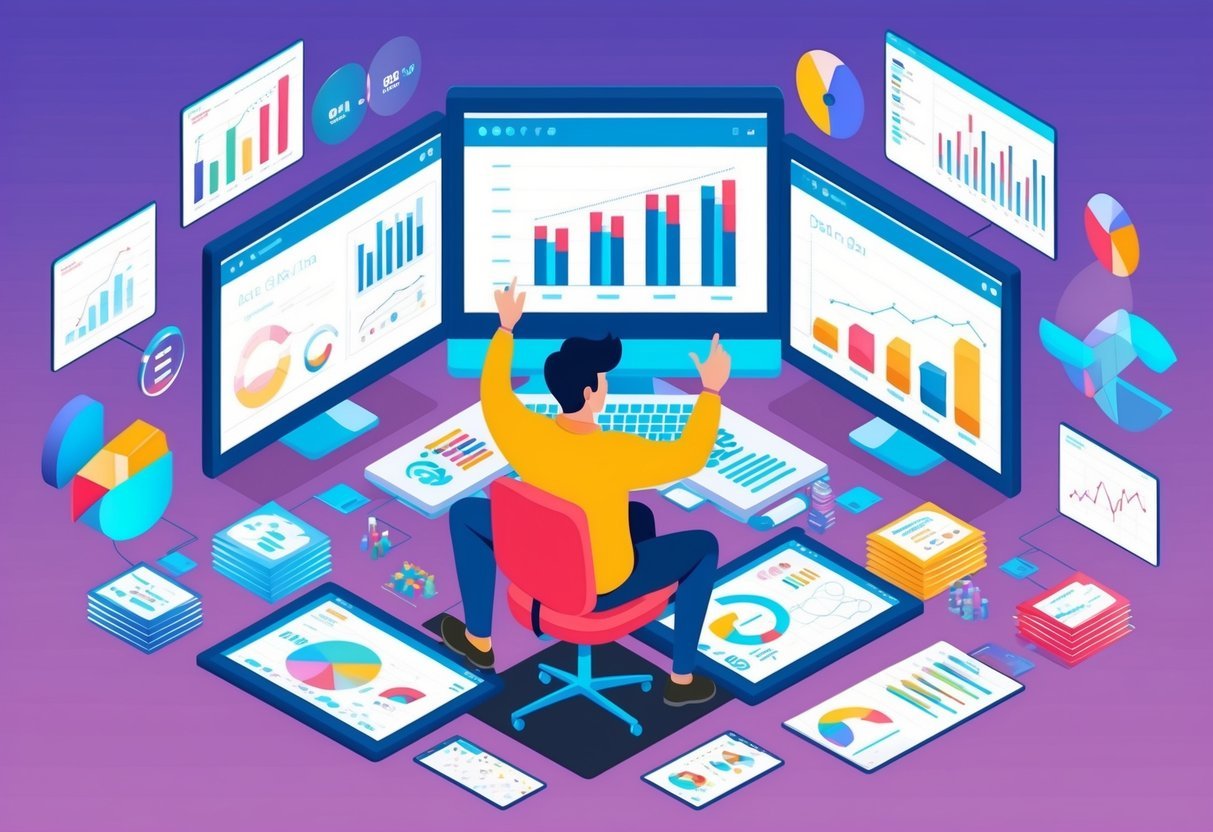
Data analysis and visualization are crucial for transforming raw data into meaningful insights. Techniques for analyzing data help uncover trends and patterns, while visualization tools make these findings accessible.
The Art of Extracting Insights through Data Analysis
Data analysis involves examining datasets to identify important information and guide decision-making. This process typically starts with data cleaning to ensure accuracy, followed by exploration to spot patterns. Analysts use various statistical methods to interpret data and draw conclusions.
Visualizations, such as graphs and charts, simplify complex data sets, making it easier for stakeholders to understand findings. By focusing on key metrics and trends, data analysis enables businesses to make informed choices and predictions about future outcomes.
Tools for Presenting Data: Tableau and Excel
Tableau and Excel are popular tools for data visualization.
Tableau is known for its powerful and interactive visualizations, making it easy to connect to various data sources. Users can create dashboards that highlight key trends and insights, which enhances stakeholder engagement.
Excel is a versatile tool widely used for simpler data visualization tasks. With features like pivot tables and charts, it allows users to manipulate and present data effectively. Though not as advanced as Tableau, Excel is suitable for basic data tasks due to its accessibility and ease of use. Both tools play significant roles in translating data findings into clear, visual formats.
The Role of Machine Learning in Data Science
Machine learning is essential in data science for processing large datasets and creating insights. It automates data analysis and improves accuracy in predictions. This section explores machine learning algorithms and their role in building predictive models.
Understanding Machine Learning Algorithms
Machine learning algorithms are crucial tools in the field of data science. They enable computers to learn from data without being explicitly programmed. Common algorithms include linear regression, decision trees, and neural networks.
Linear regression is used to predict continuous outcomes. For example, estimating a house’s price based on its features.
Decision trees are used for classification tasks, like determining if an email is spam.
Neural networks mimic the brain’s structure and are used in more complex tasks such as image recognition.
The choice of algorithm depends on the problem nature and data characteristics. It’s important for data scientists to understand the strengths and limitations of each algorithm. This understanding helps in selecting the best approach and achieving the desired outcomes effectively.
Building Predictive Models from Data
Building predictive models requires organizing and analyzing data to forecast future outcomes. In data science, machine learning is a key player in this process. It enhances the ability to make precise predictions based on historical data.
These models are used in various fields, such as finance for stock market trends, or healthcare for predicting disease outbreaks.
The process begins with data collection and cleaning. Afterward, the data is divided into training and test sets.
Training is crucial as it allows the machine learning algorithm to recognize patterns. Once trained, the model is evaluated using the test set to validate its predictive power.
Data scientists continuously refine models to improve accuracy and reliability. By doing so, organizations can make better strategic decisions based on data-driven insights.
Real-World Applications of Data Science
Data science plays a crucial role in various fields, offering pioneering solutions and enhancing efficiency. From health care innovations to e-commerce personalization and transportation advancements, its impact is evident in our daily lives.
Health Care Innovations: Genomics to Medical Imaging
In health care, data science enhances both genomics and medical imaging. Medical professionals use data science to identify genetic patterns by analyzing large genomic datasets. This aids in understanding diseases and developing targeted treatments, making strides in personalized medicine.
Medical imaging benefits from data science through improved diagnostics. Techniques such as machine learning analyze images for early disease detection. For instance, identifying tumors from radiographs with high accuracy helps in timely treatments.
Data science also streamlines pharmaceutical research, speeding up drug discovery by predicting molecular interactions, allowing researchers to focus on promising candidates quickly.
E-Commerce Personalization and Fraud Detection
Data science revolutionizes e-commerce by personalizing user experiences and detecting fraud effectively. Personalization involves analyzing shopping behavior to suggest products that align with customer preferences. This helps retailers enhance engagement and retention by delivering relevant recommendations.
For fraud detection, data science employs algorithms to monitor transactions for anomalies. By analyzing patterns and historical data, systems can flag potentially fraudulent activities.
These techniques reduce false positives and safeguard user information. Techniques like machine learning adapt to new fraud tactics, continuously updating detection models for robust protection against financial losses.
Transportation Advancements with Self-Driving Vehicles
In transportation, self-driving technology relies heavily on data science. Autonomous vehicles use vast amounts of sensor data to navigate and make real-time decisions. This involves processing data from cameras, lidar, and radar to understand surroundings and predict movements.
Data science algorithms ensure vehicles can react safely in complex environments. This technology aims to reduce road accidents by minimizing human error.
Additionally, self-driving vehicles optimize traffic flow and contribute to more sustainable urban transportation by reducing congestion and emissions. Through machine learning, these systems continually improve, refining driving strategies for diverse conditions.
Advanced Topics in Artificial Intelligence

Advanced topics in artificial intelligence (AI) cover a wide range of methods and tools. Key areas include deep learning and neural networks, which are powerful for tasks like image recognition. Natural language processing (NLP) and recommendation systems enhance user interaction with technology by understanding and predicting human preferences.
Deep Learning and Neural Networks
Deep learning involves the use of neural networks with many layers to analyze complex data inputs. These networks, like convolutional neural networks (CNNs) and recurrent neural networks (RNNs), excel in tasks such as image and speech recognition.
-
Convolutional Neural Networks (CNNs): Ideal for image data, CNNs use layers that focus on small chunks of input data, making them great at handling visual patterns.
-
Recurrent Neural Networks (RNNs): Used in speech and text, RNNs process data sequences, essential for time series and language tasks.
With neural networks, AI systems make sense of large data sets, improving accuracy and efficiency in data-heavy applications.
Natural Language Processing and Recommendation Systems
Natural language processing (NLP) is crucial for enabling machines to understand and respond to human language. NLP powers chatbots, virtual assistants, and tools like translation apps. It uses techniques to process, analyze, and generate language comprehensibly.
Recommendation systems enhance user experience by suggesting products, services, or content based on data analysis. These systems are widely used in platforms like streaming services and online retail.
-
Collaborative Filtering: Uses user behavior data for predictions, grouping similar users to provide relevant suggestions.
-
Content-Based Filtering: Analyzes item attributes to recommend similar items to those a user has liked before.
Both NLP and recommendation engines are central to building responsive and personalized AI systems. They help create interactions that feel intuitive and human-like, thereby enhancing user satisfaction and engagement.
Career Opportunities and Job Outlook
The data science field offers a range of career paths and maintains a strong job outlook. With roles like data scientist and machine learning engineer, professionals can find rewarding opportunities. Further growth is encouraged through educational pathways and certifications.
Exploring Diverse Roles in Data Science
Data science presents numerous job opportunities across various roles. A data scientist typically handles gathering and analyzing data, while a data engineer focuses on the architecture that enables data flow.
Machine learning engineers apply algorithms to automate predictions and decisions. Database administrators ensure data integrity and performance. Analysts, including business, financial, data, and product analysts, interpret data to guide decision-making. A data system developer designs and implements effective data management systems. This diversity in roles allows skills to be applied across different industries.
Educational Pathways and Certifications
Educational requirements for roles in data science often include a Master’s degree in data science or related fields. Specialized programs in data science and machine learning are becoming popular.
Certifications can enhance career prospects. The Cloudera Certified Professional credential is recognized in the industry.
Other relevant certifications include Google Professional Data Engineer, IBM Data Science Professional Certificate, and Microsoft Certified: Azure Data Scientist Associate. These certifications provide specialized knowledge and skills, helping to validate a professional’s expertise. Continuous learning and skill development are essential in this rapidly evolving field.
Emerging Trends and the Future of Data Science
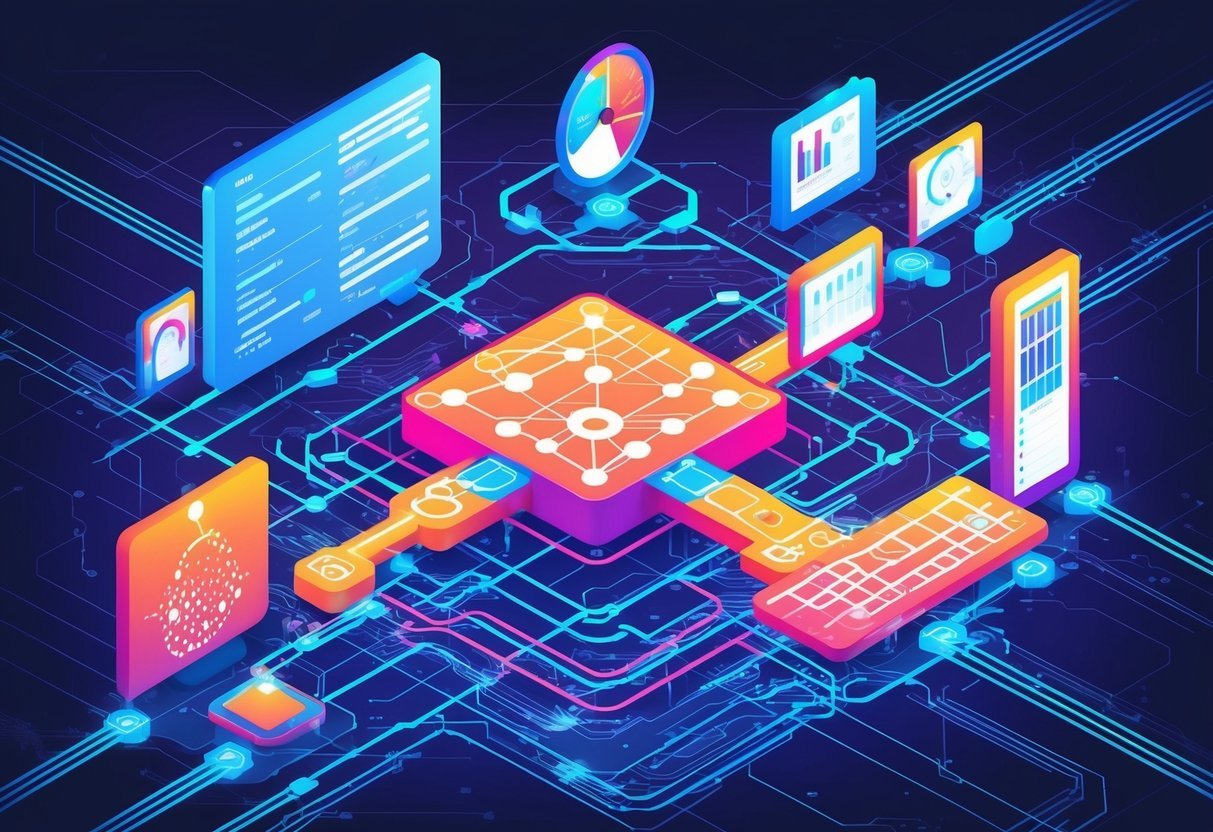
Data science is transforming rapidly due to major trends that enhance data processing and usage.
Key developments involve advancements in big data technologies and the expansion of predictive analytics applications. These changes aim to boost efficiency and insight generation across industries.
Technological Advancements in Big Data and Analytics
Big data is increasing in importance as technologies evolve to handle larger datasets more efficiently.
Innovations in cloud computing have enabled scalable and flexible storage solutions. This allows companies to access vast amounts of data from anywhere, enhancing their analysis capabilities.
Data analytics tools are also advancing, providing businesses with sophisticated methods to extract meaningful insights.
These tools rely on machine learning and AI to automate processes and improve decision-making. More organizations are adopting big data analytics to stay competitive, as they can derive actionable insights and forecast future trends with greater accuracy.
Predictive Analytics and Advanced Applications
Predictive analytics is becoming a cornerstone of modern data science.
By using historical data and machine learning algorithms, it forecasts future outcomes with high accuracy. This capability is crucial for sectors like finance, healthcare, and marketing, where anticipating trends leads to strategic advantages.
Advanced applications now include automated decision-making and intelligent systems, which are transforming how businesses operate.
For example, customer behavior can be predicted, allowing for tailored marketing strategies. The technologies also enhance risk management by predicting potential issues before they arise. This is essential for maintaining competitiveness in rapidly changing markets.
The integration of augmented intelligence, where humans collaborate with AI, is expected to further elevate predictive analytics, making it more intuitive and impactful.
The Data Science Process from Start to Finish
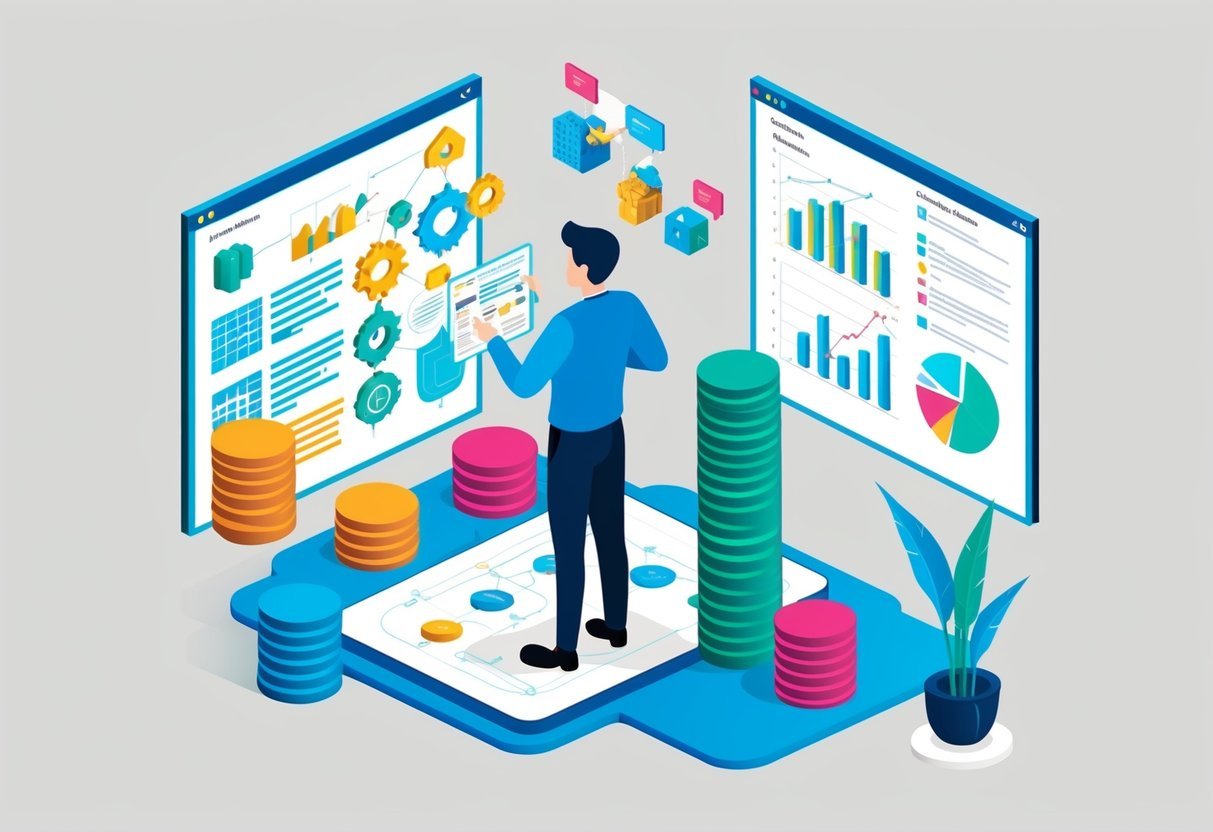
The data science process involves several critical stages that transform raw data into actionable insights.
These stages typically involve structured data collection, management, and sophisticated analytical techniques to produce accurate predictions.
Data Collection and Management Strategies
Data collection forms the backbone of the data science process. This involves gathering data from various sources such as databases, APIs, or sensors.
Effective management strategies ensure that this data is clean, organized, and ready for analysis. Cleaning data may involve removing duplicates, correcting errors, and handling missing values.
To manage data efficiently, data scientists often employ tools that automate these tasks, ensuring a smooth data pipeline flow.
A well-defined pipeline facilitates the seamless transition of data from collection to analysis. This infrastructure is crucial for ensuring consistent data quality and reliability throughout the project. Integrating these strategies within a framework helps maintain data integrity, which is vital for subsequent analysis.
From Data Mining to Insightful Predictions
Data mining is a key stage in extracting valuable patterns from vast datasets.
Techniques like clustering, classification, and association help uncover hidden relationships in the data. These techniques form the foundation for generating insights that guide decision-making.
Once patterns are identified, statistical analysis is employed to validate these findings. This involves using statistical models to understand relationships within the data.
Predictive analysis builds on this by using historical data to forecast future trends. These predictions are crucial for businesses as they enable data-driven decision-making and strategic planning.
By continuously refining models, data scientists ensure that predictions remain accurate and relevant in a dynamic environment.
Effective Business Strategies with Data Science
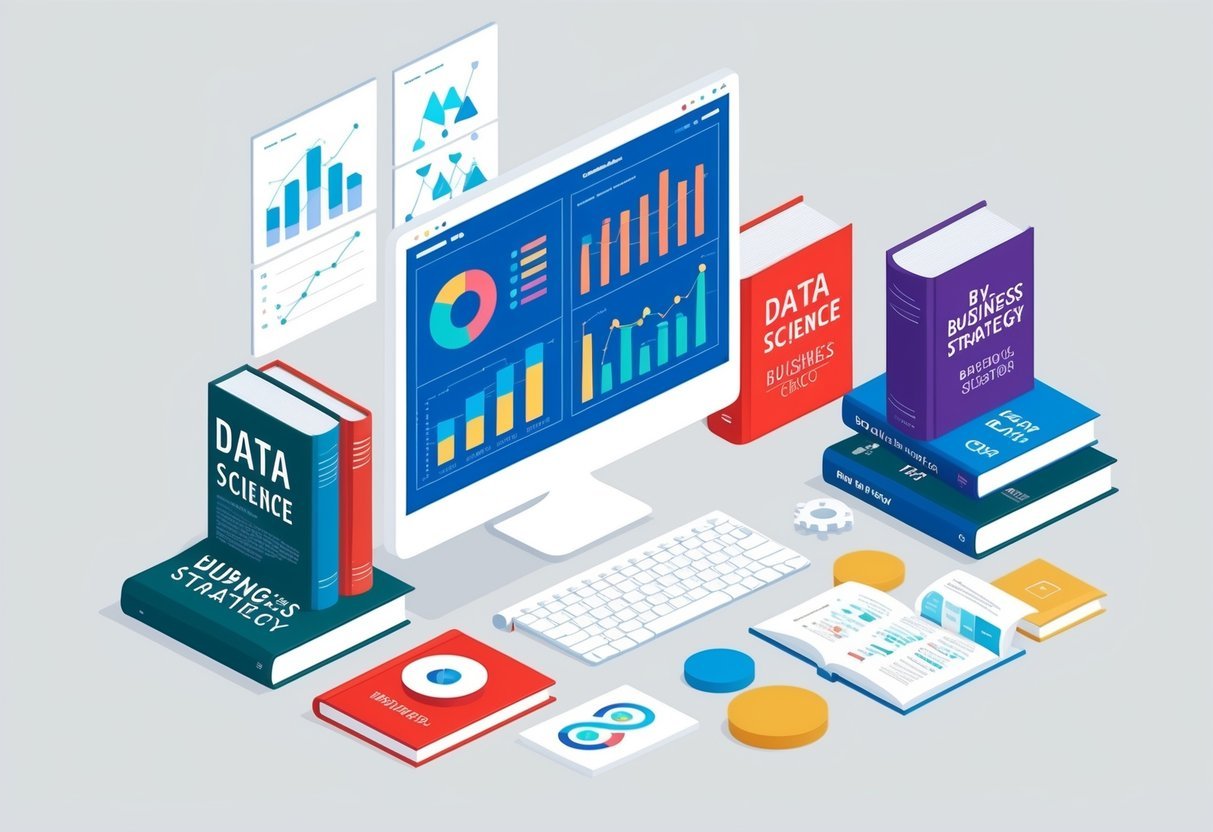
Businesses today use data science to improve their strategies. It plays a vital role in enhancing growth and marketing through analytics and quantifying efforts.
Leveraging Analytics for Business Growth
Data analytics is a powerful tool that enables businesses to understand patterns and trends.
By utilizing advanced analytics, companies can identify potential market opportunities and optimize operations. Predictive modeling helps in forecasting future trends, allowing businesses to make informed decisions.
A business analyst examines data to pinpoint inefficiencies and suggest improvements. They use historical and real-time data to enhance performance.
Through analytics, businesses can tailor their strategies to align with market demands, creating more targeted campaigns. The application of data analytics leads to resource optimization and enhanced productivity.
Quantifying Marketing Endeavors with Data
In the realm of marketing, quantifying efforts through data is crucial.
Businesses can analyze customer behavior and preferences with detailed data, enhancing targeted marketing strategies. Data science allows marketing teams to evaluate the effectiveness of different campaigns and channels.
By using data analytics, companies can allocate their marketing budgets more efficiently. This involves adjusting strategies to focus on the most impactful activities.
Predictive modeling provides insights into consumer trends, aiding in the creation of personalized experiences. Marketers rely on data-driven insights to tailor messages that resonate with their audience, increasing engagement and conversion rates.
Frequently Asked Questions
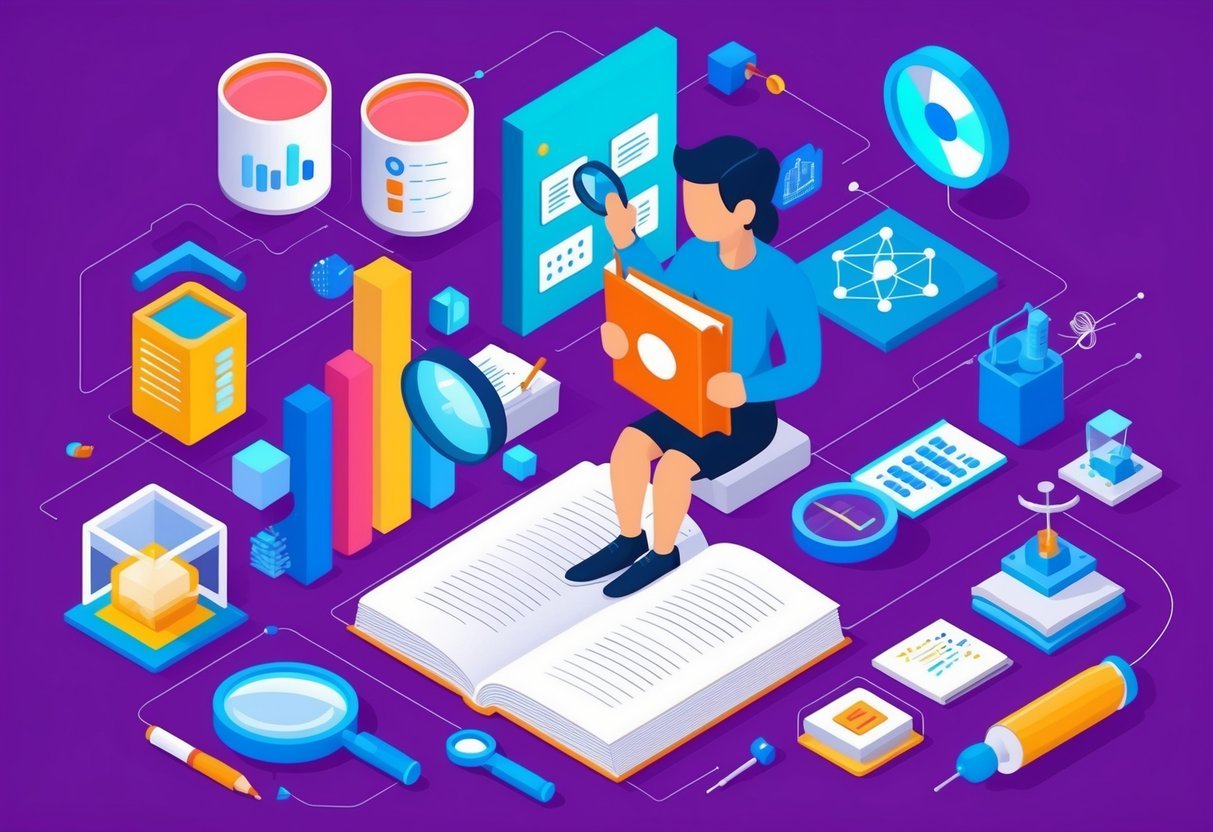
Data science is a vast field covering technical skills, analytical thinking, and real-world applications. Understanding different roles and processes helps beginners focus on essential learning paths.
What constitutes the core knowledge base for a beginner in data science?
Beginners in data science should focus on learning programming skills, particularly in languages like Python or R. Knowledge of statistics and data analysis is crucial. They should also understand data visualization techniques to present findings clearly.
How does data science apply to real-world problems?
Data science is used to solve various problems, such as predicting consumer behavior, optimizing supply chains, and detecting fraud. It helps in making data-driven decisions that improve efficiency and effectiveness in multiple industries.
What are the various types of roles within the data science field?
The data science field includes roles like data analyst, data engineer, data scientist, and machine learning engineer. Each role focuses on different aspects, such as data management, model building, or analyzing large datasets.
Can you outline the typical process involved in a data science project?
A typical data science project involves defining the problem, collecting and cleaning data, analyzing data, building models, and interpreting results. It often requires iteration between these steps to improve and refine outcomes.
What is the significance of data science in today’s technology landscape?
Data science is crucial in today’s technology landscape as it supports innovation and decision-making across industries. With data-driven insights, companies can better understand trends, optimize operations, and improve customer satisfaction.
For someone new to the field, what are the essential topics to learn in a data science course?
Essential topics for newcomers include programming, statistics, machine learning, and data visualization. They should also explore the ethical considerations of data usage and how to handle large datasets efficiently.
Consider browsing through online resources that offer self-study options for a comprehensive learning experience.
